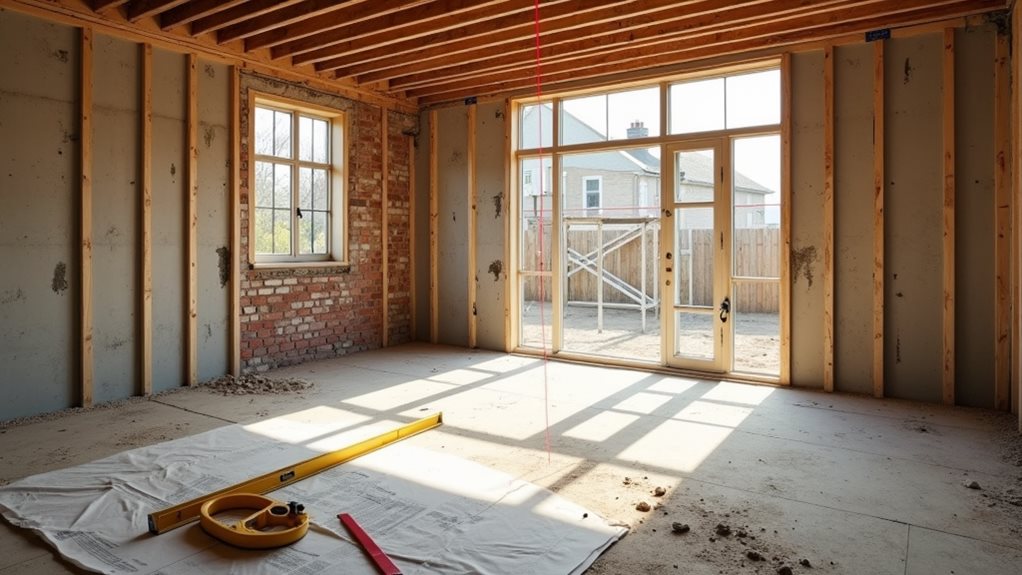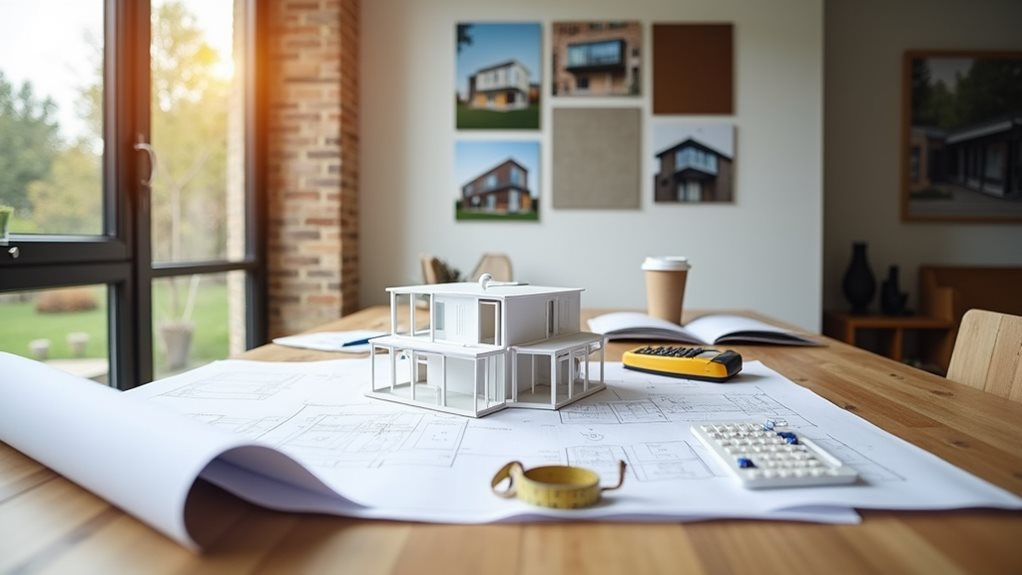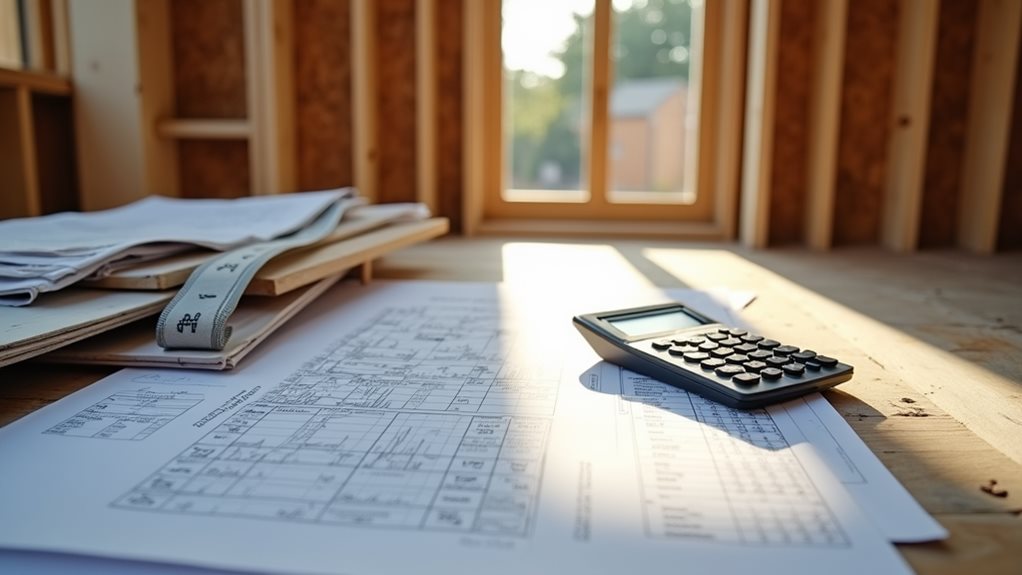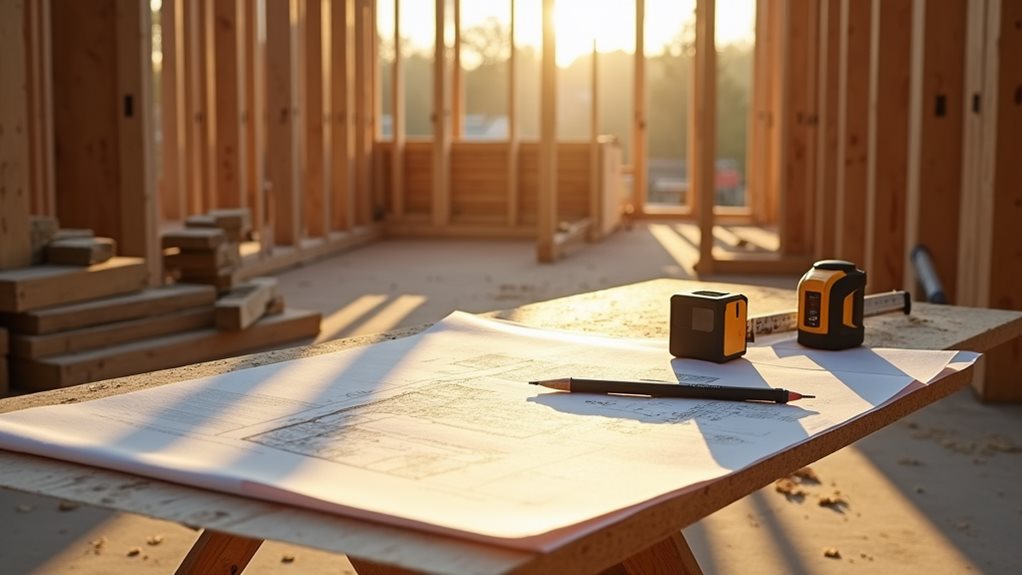Phone:
(701)814-6992
Physical address:
6296 Donnelly Plaza
Ratkeville, Bahamas.

Achieve your dream home expansion with these 5 critical steps that most homeowners overlook when planning their room extension.
To guarantee a successful room extension project, you'll need to master five essential elements. Start with purposeful planning that defines your space needs and vision. Next, focus on creating a seamless design that integrates with your existing home. Manage your budget effectively, typically ranging from $125-$175 per square foot. Navigate building regulations and permits carefully, and establish a realistic timeline for completion. These fundamental steps will reveal the path to your dream extension.

While beginning a room extension project might seem intimidating at first, taking a methodical approach to planning will set you up for success.
Start by defining your space functionality needs and gathering design inspiration that aligns with your vision for the new area.
You'll want to carefully assess your current space limitations and think about how you'll use the extension both now and in the future. Single storey extensions, for instance, can significantly enhance your living space while maintaining a cohesive look with your existing home.
Consider whether you're looking for a rear, side, or double-story addition, and make sure your plans accommodate long-term flexibility.
Before diving into the creative aspects, establish a realistic budget that covers all potential expenses.
Don't forget to research local regulations and planning permissions – they'll play an essential role in shaping your project's scope and making certain you're building within legal parameters.
Working with experienced design professionals early in the planning process can help transform your vision into a practical, well-executed plan.
Once you've established your extension's purpose, mastering the design and layout process becomes your next essential step. Your focus should be on creating a space that seamlessly integrates with your existing home while optimizing both functionality and design aesthetics.
Through thoughtful layout optimization, you'll guarantee your extension feels like it's always been part of your home. Open plan layouts can transform your living spaces and dramatically improve spatial perception.
To achieve the perfect balance in your extension design, consider these critical elements:
Remember to work with structural engineers and architects who'll help translate your vision into reality while confirming all technical requirements are met.
You'll find that attention to these details makes all the difference in creating your dream space.

A well-designed extension deserves equally thoughtful financial planning to bring your vision to life.
Begin by conducting thorough cost estimation, factoring in everything from architectural plans to site preparation, which typically ranges from $125 to $175 per square foot.
You'll want to explore various financing options, such as home equity loans or lines of credit, to guarantee you're comfortable with your investment.
Remember that smarter choices in materials and design can greatly impact your bottom line.
Consider standard materials instead of custom ones, and don't shy away from DIY tasks like painting to reduce labor costs.
Most importantly, set aside 10-15% of your budget for unexpected challenges.
Before breaking ground on your room extension, you'll need to navigate the complex world of building regulations and permits. Your first steps should focus on zoning compliance and proper permit application to guarantee your project meets all local requirements.
Working with building officials early can help you avoid costly mistakes and delays.
To streamline your approval process, follow these essential steps:

Following proper permit approval, setting realistic timelines becomes your next major planning milestone.
You'll need to account for several key factors that influence your project's duration, including the complexity of your design and essential preparation stages.
Your design timelines will vary based on the extension's size and intricacy, with larger or more complex projects requiring additional time.
The preparation phase typically spans 12-19 weeks, encompassing design development, technical planning, and building preparation.
To keep your project on track, you'll want to break down these project milestones into manageable segments, ensuring clear communication with your team throughout the process.
Consider factors like material availability, worker scheduling, and potential logistical challenges when mapping out your timeline.
Your room extension project isn't just about adding square footage – it's about weaving new life into your home's fabric. By following these essential tips, you'll navigate through planning, design, budgeting, regulations, and timing with confidence. While challenges may arise like speed bumps on a highway, staying organized and focused will help you transform your vision into reality, creating that perfect space you've been dreaming about.